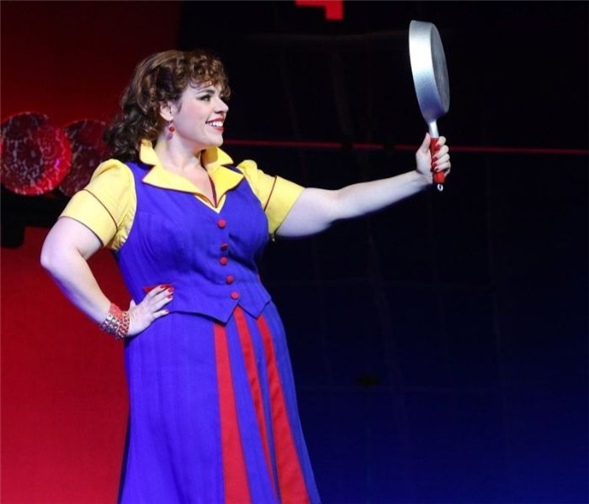Translate Page

A theatre lover weighs in on the lack of size diversity in the industry
---
As a musical-loving teen, I spent countless hours imagining myself as my favorite Broadway heroines. But my fantasies evaporated whenever I looked in the mirror. I'd never seen a Christine in The Phantom of the Opera or a Belle in Beauty and the Beast or an Eliza Doolittle in My Fair Lady who was bigger than a size two, and I was hovering around a 10. As a young theatre fan, I wanted desperately to fit the picture of the strong female lead—so much so that it fed the feelings of insecurity and inadequacy that triggered my anorexia.
That wasn't the sole cause of my body image struggles of course—our entire society sends girls the message that they can never be too thin. But the lack of size diversity on Broadway was certainly a contributing factor. As an anorexia survivor who has been severely underweight, overweight and everywhere in between during the past decade, I need to see positive representations of larger body types in the theatre. It's part of what keeps me healthy.
The first time I saw someone who looked like me on stage was a YouTube clip of a touring production of Phantom. The actress playing Christine had plump arms, a large bust and the corset didn't make her waist so tiny that she could wear a necklace as a belt. At the time, I always wore Spanx and a minimizing bra in order to reduce my curves. Seeing someone so talented, successful and comfortable in her own shapely body inspired me to buy my first comfortable bra, ditch the Spanx and try form-fitting jeans.
Once I moved to New York for college and started to attend Broadway productions regularly, I was dismayed to find that I rarely saw women who resembled me on stage. For an industry that's constantly talking about diversity and inclusion, it's disheartening that hiring actresses with a range of body types is not part of that conversation. Sure, most musicals have that one plus-size chorus girl, but you rarely see an ensemble that looks like a group of average American women, 68 percent of whom wear a size 14 or above.
Talent comes in all shapes and sizes. Voluptuous actresses shouldn't be limited to playing Tracy Turnblad in Hairspray or the handful of other musical theatre roles where weight is a plot point. And yet, that's often what happens to plus-size Broadway actresses such as Lisa Howard, Bonnie Milligan and Alysha Umphress. In a recent interview, Umphress talked about how much she relishes tackling roles where her figure isn't addressed. "When I played Hildy in On the Town, she was just a cab driver who was out for a good time. Nothing was written in the script about her size at all, and I was so lucky to be cast as the size that I am in that role."
There's no reason most leading roles for women in musical theatre can't be played by bigger actresses. There's nothing dictating that Glinda or Jasmine or Cosette must be thin. (Fantine, on the other hand, probably should be since she's poor and starving). Why can't there be more Christines like the one I saw who made me realize that my curves do not preclude me from being talented, beautiful and desirable?
Women like me—aka the majority of women in the U.S.—need to see ourselves on stage. We live rich, nuanced lives that aren't defined by size, and we want to see that reflected. Representation is important, powerful and even life changing. I know that firsthand: Seeing that Christine be her gorgeous, curvy self made me realize that if she didn't need to be thin, I didn't have to strive to be skinny, either.
---
Meg Masseron is currently studying Digital Journalism and Theatre Arts with a concentration in Theatre History at Marymount Manhattan. Follow her on Twitter at @megmnyc. Follow TDF at @TDFNYC.
Top image: Alysha Umphress in On the Town on Broadway. Photo by Joan Marcus.
TDF MEMBERS: Go here to browse our latest discounts for dance, theatre and concerts.